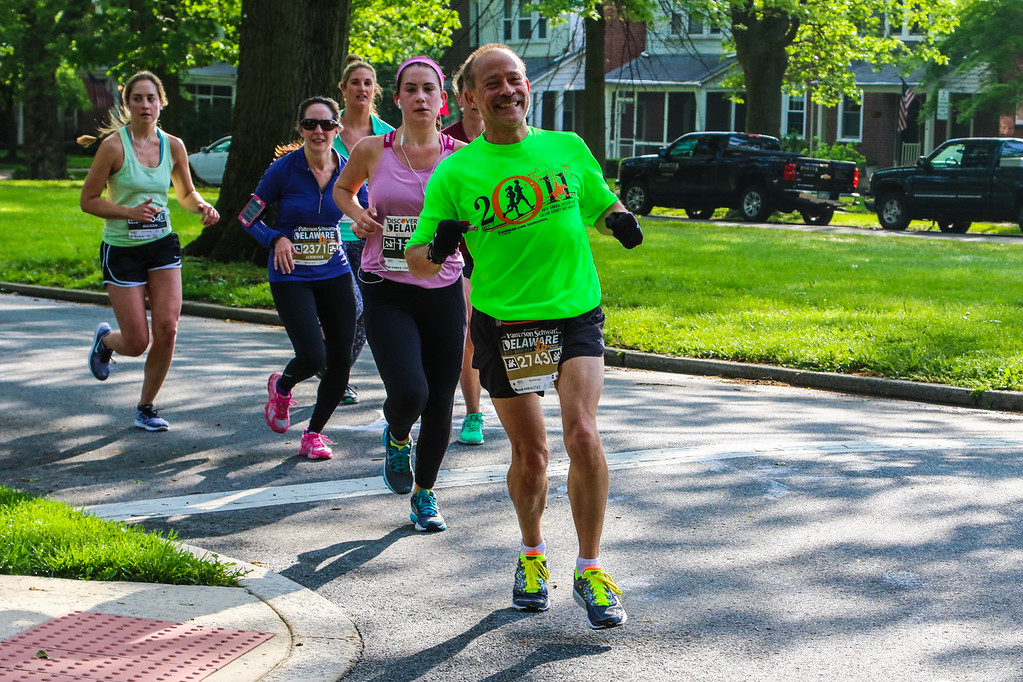Stuck on an Escalator
One of my pet peeves is that most people seem to think that an escalator is some type of carnival ride. They step onto it and immediately stop walking. I want to shout, "It's a staircase that moves to help you, keep walking." It's not just me; years ago the comedians at Saturday Night Live made a skit [1] about people trapped on a stopped escalator.
When we are used to doing something a certain way, and suddenly we find ourselves temporarily unable to do that thing, it's tempting to just throw up our hands and declare ourselves "broken".
Like the escalator pictured above, you may be temporarily out of service as a runner. But that doesn't always have to mean that you're stuck laying in bed binge-watching Netflix and eating bonbons all day. Take a closer look at that picture. Do you see a broken escalator, or do you see a perfectly good staircase disguised as a broken escalator? That escalator is still usable, it's just not running!
Injuries Happen
Runner or not, injuries happen. People - usually non-runners - like to point out how frequently runners seem to get injured. In fact, if incidence of injury is calculated according to exposure of running time the incidence reported in the literature varies from 2.5 to 12.1 injuries per 1000 hours of running [2]. Funny thing though, a 2015 study showed that for cycling, the overall incidence of injury and illness was 5.83 per 1000 cycling hours[3]. Wow. That 5.83 is pretty close to the middle of the 2.5 to 12.1 range. So, running isn't really more injury prone than cycling, for example. Yet, I personally haven't heard of any cyclist being told by non-cyclists, "You're going to hurt your knees if you keep cycling so much." I think non-runners just like to pick on runners because they're jealous that they are not runners themselves.
Pain-Free Motion is Good for You
Personally, I feel better when I move. It's sitting still that seems to make me hurt. In a 2017 article for The University of British Columbia’s Faculty of Medicine, one doctor explains [4] why she changed her sports medicine practice to adopt movement as the gold standard for treating physical injury. She cites research that shows movement improves blood flow, which drives oxygen to heal the injured area and removes metabolic waste, while also stimulating the healing of tissues.
RICE is Bad for You
I'm a proud vegan and carb-lover. Lower-case rice is good for you. But it turns out that upper-case RICE (Rest, Ice, Compression, Elevation) might be bad for you. Who would know better than Dr. Gabe Mirkin, the man who coined the RICE term in a sports medicine book he wrote back in 1978. 37 years later, in a 2015 blog post [5], Dr. Mirkin writes,
Coaches have used my “RICE” guideline for decades, but now it appears that both Ice and complete Rest may delay healing, instead of helping.
However, it is important to note that ice can help reduce the pain of an acute injury right after it happens. That said, there is no reason to continue icing an injury more than six hours after it has occurred.
What's an Injured Runner to Do?
If you hurt yourself, stop running! Evaluate the injury. If it causes you to change your gait, do not continue running. Walk if you must, to get back to transportation. Consider seeing a sports physician or physical therapist. When it's time to start healing look to activity instead of idleness. Keep moving, but if it hurts stop. Remember, pain-free movement promotes healing. Movement that causes pain is likely causing further injury.
Ending With an Analogy
While you're waiting for your escalator to be repaired, remember that there is an elevator nearby if you need one, and don't forget that a stalled escalator can still be used as a stairway.
References
[1] https://www.nbc.com/saturday-night-live/video/escalator/n36866
[3] Injury and illness among athletes during a multi-day elite cycling road race
[5] https://www.drmirkin.com/fitness/why-ice-delays-recovery.html
[5b] https://snltranscripts.jt.org/04/04aescalator.phtml



